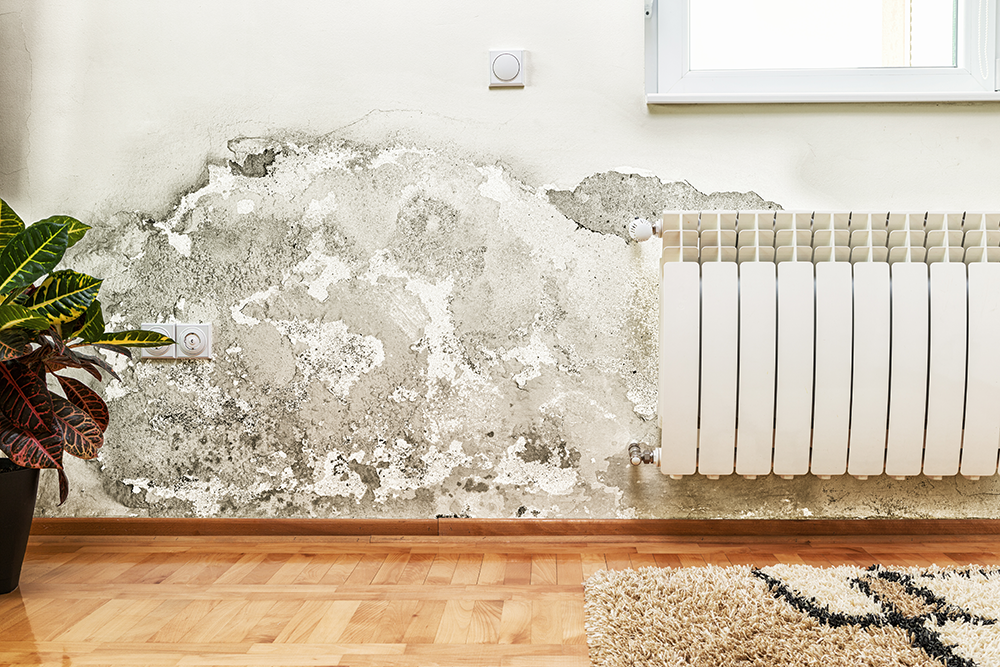Watch Video from Link Here: Mold in Attic
Cause #1: You guessed it! A leaking roof
Sometimes a roof leak is bad enough that water leaks into the floors below and becomes immediately apparent. While this kind of water damage is never fun, the good news is that at least you know what the problem is and can get it dried before mold starts to grow. However, for an unfortunate few, the roof leaks from the recent storm damage have gone unnoticed until the attic is visited to retrieve our holiday decorations. For these folks, mold has already begun to grow.
Remedy: Get the roof repaired!
Cause #2: Missing insulation or improperly installed insulation
For many of us DYI’er (Do-It-Yourself’er) homeowners, the first thing we think about to save money on heating and cooling bills is to install more insulation in our attics. Unfortunately, improper installation or choosing the wrong kind of insulation causes moisture from the lower levels of the home to rise and get trapped in the attic. This moisture feeds mold growth. If you’re layering insulation atop other insulation, don’t use the kind that has “kraft face” finish (i.e., paper or foil backing). It acts as a vapor barrier and can trap moisture in the insulation.
Remedy: Ask a better question – do you really need more insulation?
Cause #3: Inadequate attic ventilation
I know it seems counter-intuitive, but the basic ventilation principal for your attic is to keep it as cool as possible during the cold season. Many of us think the opposite, and seal all of the attic vents or even insulate the roof decking, assuming it will lower our heating bill. Unfortunately, by sealing the vents or tacking insulation to the underside of the roof we create ideal environment for attic mold to grow, by keeping moist, warm air trapped inside.So how good is your attic ventilation? A perfect time to find out is the next snow storm. If you look at your roof for several days after it snows and you see an even distribution covering your roof your attic ventilation is just fine. Any roof surface section where snow starts disappearing suggests the areas in the attic where warm air has been trapped instead of being properly vented to the exterior.
Remedy: Make sure your soffit vents are free of insulation, bird nests, & debris and think about hiring a home inspector to evaluate your attic.
Cause #4: Dryer vents, plumbing vents, kitchen or bathroom fans vented into the attic
Related to #3 above, this practice can pump warm moist air into the attic where it can be trapped and begin the cycle of mold growth. Mold needs 3 things to grow: moisture, food, and warmth. If you eliminate just one of these elements, mold will starve and die.
Remedy: Hire a handyman to re-route those vents outside.
Cause #5: Water heaters or furnaces installed in the attic
Recent building practices for larger homes have changed. It used to be that only basements were used for water heaters and furnaces. However, larger homes with several heating and cooling zones, as well as spa style bathrooms with huge soaking tubs, it is now common practice to have designated systems to support these luxuries. Unfortunately, this practice can contribute to adding moisture to attics and attic mold growth if leaks aren’t detected in time or the appliances are improperly installed.
Remedy: Get a maintenance contract with a service company to inspect your system twice a year.
Cause #6: Ice damming
Ice Dams occur when water can’t drain properly from the roof, freezes, and backs up into the home through the attic. The stagnant water causes attic mold growth.
The best way to prevent this: clean your gutters when you’re installing your outdoor Christmas lights so that winter’s rain and melting snow can drain. As you’re cleaning the gutters, look for leaks and misaligned pipes and make sure the downspouts carry water at least 10 feet away from the house’s foundation.
If you do find mold in your attic, DON’T use bleach! The first step is to call in the experts for an evaluation.
[Source: PuroClean]

